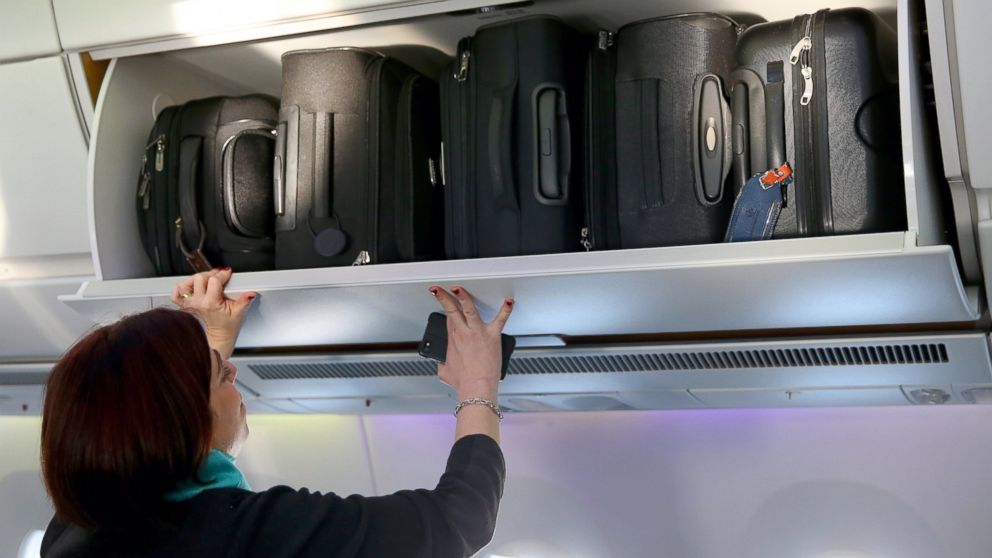The Big Bag Theory: Have Airlines Gone Bonkers Over Carry-Ons?
We may soon have to ditch our favorite carry-on bag.

— -- It's bad enough that some airlines are tacking on seasonal bag fee hikes (Spirit in the U.S. and Europe's Ryanair, to name two). Now, there are reports that we may soon have to ditch our favorite carry-on bag.
The problem? Most of these small bags are supposedly too big. My response to this Big Bag Theory? Baloney. Meantime, hang onto your old carry-on.
The theory is the brainchild of the International Air Transport Association, a trade organization of 260 airlines around the world; IATA's executive offices are in Geneva. What the organization wants is for all airlines to follow IATA's new guidelines on maximum sizes for carry-on bags, as follows: 21.5 (height) x 13.5 (width) x 7.5 depth in inches (or 55 x 35 x 20 cm).
Is this smaller than the current norm? There is no norm, not in the U.S. or around the world, but yes, it's on the petite side. Some examples of current maximum carry-on sizes:
- Alaska: 24 x 17 x 10 inches
- British Airways: 22 x 18 x 10 inches
- Qantas: 22 x 14 x 9 inches
- Spirit: 22 x 18 x 10 inches
- United: 22 x 14 x 9 inches
Does this mean you should run out and get a brand new bag? No. Despite initial fears about this, IATA has since clarified some details about its recommendation, including the fact that it is not binding. While a spokesman claimed a handful of airlines are on board with the new size, no airline we're aware of will force passengers to downsize carry-ons (as long as they meet the airline's standards). And even though IATA says it expects "major airlines" to join in, well, this is where my baloney comment comes in.
If this was something directed at leisure travelers only -- the once-a-year vacation crowd -- I might say there was a chance. But guess who uses carry-on bags? Business travelers. And here's a dirty little secret: Airlines will accept only a certain amount of grumbling from economy passengers, but you better believe they won't anger the biz folks.
Road warriors are the life-blood of most airlines, and for good reason: Business travelers pay higher ticket prices (or their bosses do), sometimes five or 10 times as much as economy class. That's because they buy horrendously expensive last-minute tickets and/or horrendously expensive business or first-class seats. What's important here is the bottom line, and no airline will risk upsetting these lucrative fliers and risk losing them.
Nevertheless, IATA's Tom Windmuller says smaller bags would "make things easier for everybody" because there'd be more room for everyone's bags in overhead bins. However, there is already a trend toward roomier bins. We've seen the widely-touted bigger bins in the latest Airbus and Boeing aircraft, not to mention Boeing's new Space Bins for 737s that the aircraft manufacturer says holds 50 percent more bags.
One final thing: The overall intent of the Big Bag Theory is good. We should pack lighter. For one thing, we'll save on checked-baggage fees and, at $25 each way, they add up (especially for a family of four). The good news is, if you already have a carry-on, no need to rush out and get a replacement -- but next time you fly, consider actually pulling it out of the closet and using it.
Any opinions expressed in this column are solely those of the author.




